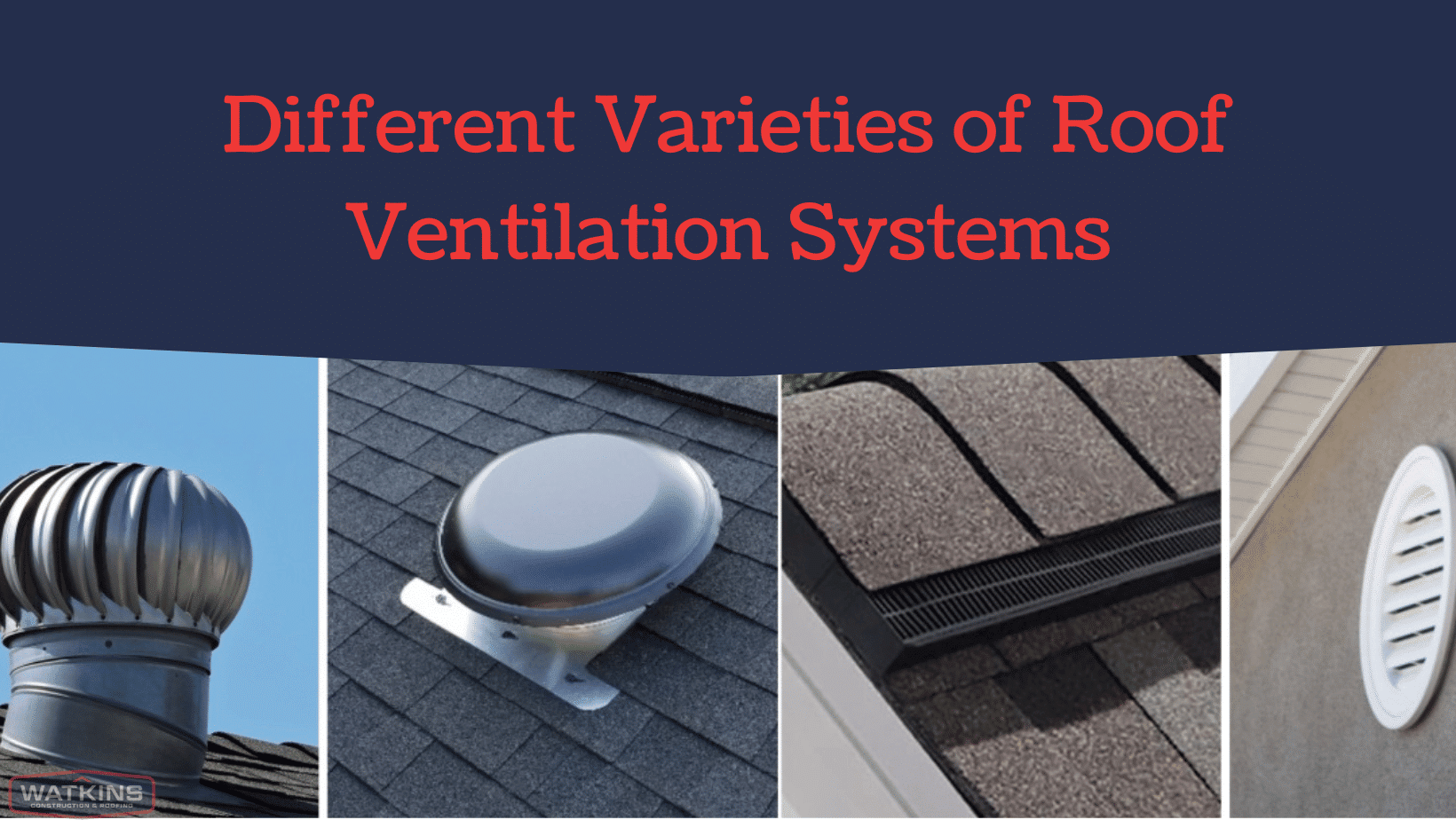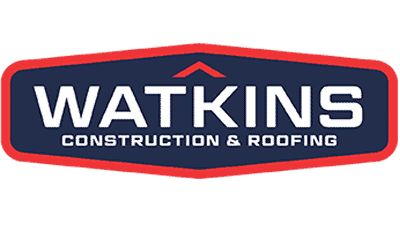Watkins Construction & Roofing has provided you and article of the different varieties of roof ventilation systems. Have you ever looked at a recently built roof? Pipes and metal hoods will probably protrude from it. Most houses have some penetrations for the diverse venting systems.
But why are all those vents necessary? You can avoid damage to property and potential health hazards thanks to them.

Roof Vents and Pipe Vents
The attic ventilation system links to many of the roof vents. They improve your home’s ventilation considerably. They let the hot, humid air get out and allow cooler, drier air to enter.
The following advantages result from adequate roof ventilation:
- Controls the indoor temperature of the entire dwelling.
- Reduces the risk of mold growth in the attic.
- Prevents condensation in the attic.
- Reduces the risk of ice dam formation.
- Aids in the optimal functioning of your heating, ventilation, and air conditioning system
- Diminishes utility costs.
- Helps your roof last longer.
When you flush the toilet or run the dishwasher, your plumbing system directs the water away from your home. Your roof’s plumbing vents may be visible through the shingles. These generate a neutral pressure system, controlling the airflow throughout your plumbing system. Also, it stops sewage gas from entering your home from below.
How Can I Ventilate My Roof?
You can use two types of roof ventilation systems. They can be passive or active.
A passive system allows the airflow in and out of your roof according to the natural flow of air currents. There are no moving parts in a passive system. They rely on the wind’s speed and convection to get air into the attic. Because they do not require energy, these vents are better for the environment.
Meanwhile, an active system creates airflow in your spaces mechanically. Generally, they use fans to keep the air moving. Powered roof vents are very common and excel at venting complex areas. However, others rely on renewable energy sources like sunlight or wind to function. These are more problematic and time-consuming to maintain than passive systems because of their moving parts.
- Static Vents
The static vents on your roof will appear like little boxes. They come in a range of neutral tones and have a low profile. These boxes cover the openings in your roof that lead to the attic.
This system requires multiple vents to work effectively. Your home needs an entry point for the wind that blows around it. Thus, roofers install soffit or continuous ridge vents with static vent hoods. These exhaust vents are situated high up, whereas the intakes are low.
You will avoid pests entering by covering the openings with hardware cloth or another sturdy mesh.
- Soffit Vents
If you stand under your home’s eaves and look up, you may observe a mesh material that runs from the wall to the roof’s edge. This is a soffit vent. Roofers install it in the attic to shield your property from pests. Also, it works as an intake for cool air.
- Ridge Vents
Roof ridge vents are positioned along your roof’s top and can be active or passive. A passive ridge vent has an opening and a ridge cap, which keeps water out. An active ridge vent has baffles, which increase ventilation.
They also let the inside air escape from both sides of the vent in any breeze. Ridge vents without baffles may only vent one side. Besides, the baffles keep snow, debris, animals, and insects out of vents.
Ridge vents need many intake places like soffit vents. Otherwise, the ridge vent will act as an intake and exhaust and will not ventilate your attic enough.
- Gable-End Vents
Gable-end vents resemble miniature louvered shutters. They match your home’s architecture with several styles. Your house’s external wall below the gables has these vents. Several vents provide passive ventilation, like opening windows on different sides of a room.
- Turbine Vents
Rooftop turbine vents are tiny exhaust fans. They spin and release air through convection. Some turbine vents run on electricity independently of wind or temperature intensity. Active turbine vents work well in windless places.
A turbine vent generates a small footprint and has a cheap installation cost. But it requires more maintenance than ordinary vents.
- Power Vents
Power vents use electricity to expel hot air from your attic. They automatically switch on and off when connected to your thermostat. Power vents move air aggressively but are not appropriate for air-conditioned dwellings. They take conditioned air away from the living space, making your HVAC work harder.
Does Your Roof Have Adequate Ventilation?
The shingles on a roof can last longer and remain in good condition with the help of vents. Depending on the square footage of your roof, you will need a number and specific kinds of vents installed. Therefore, an expert roofer can tell you if your attic ventilation needs improvement. Ventilation only takes up a small portion of your roof. Yet, it has excellent benefits!
Watkins Construction & Roofing can provide you with the help you need. You can get in touch with us by calling us at 251-299-8151. We service areas in Gulf Shores, Spanish Fort, Foley, Fairhope, Robertsdale, and Orange Beach, AL.
